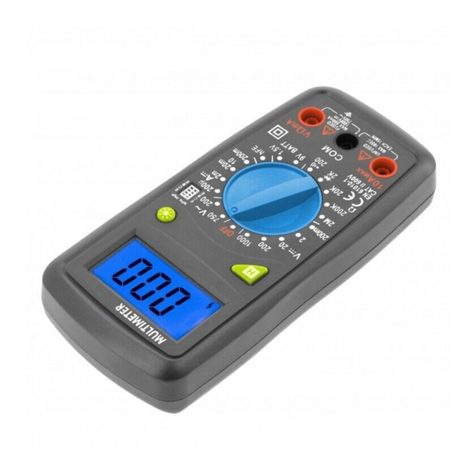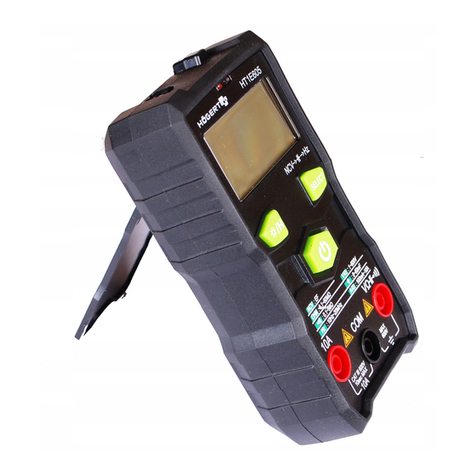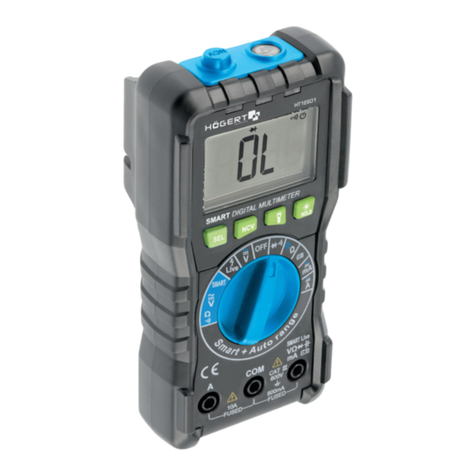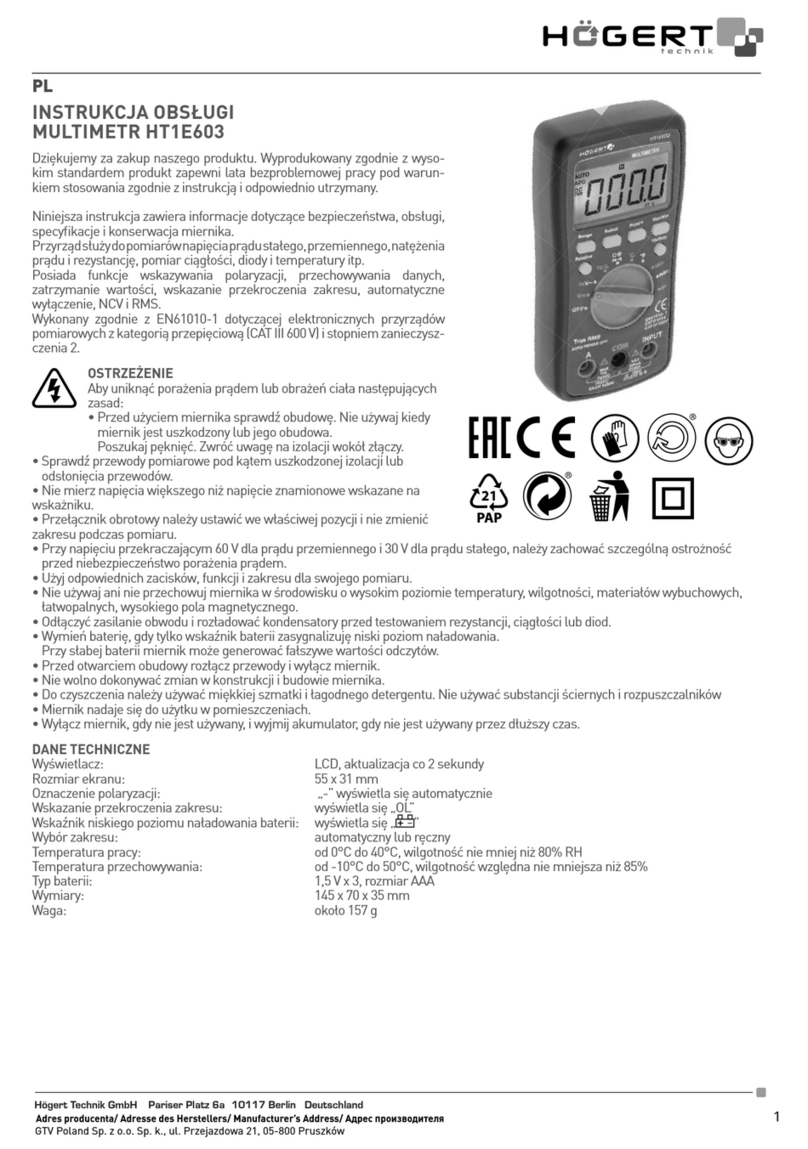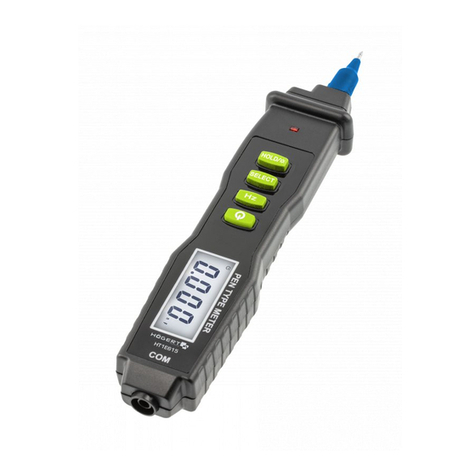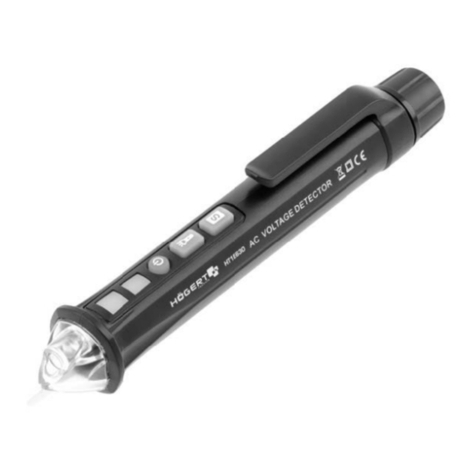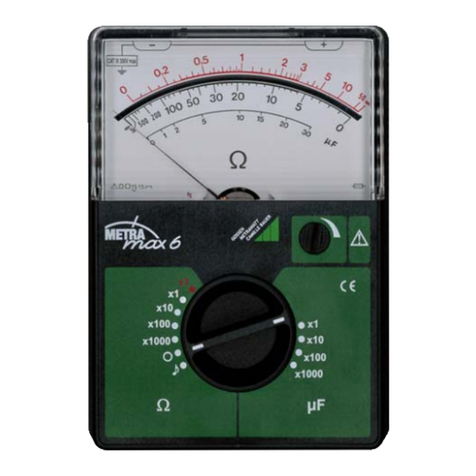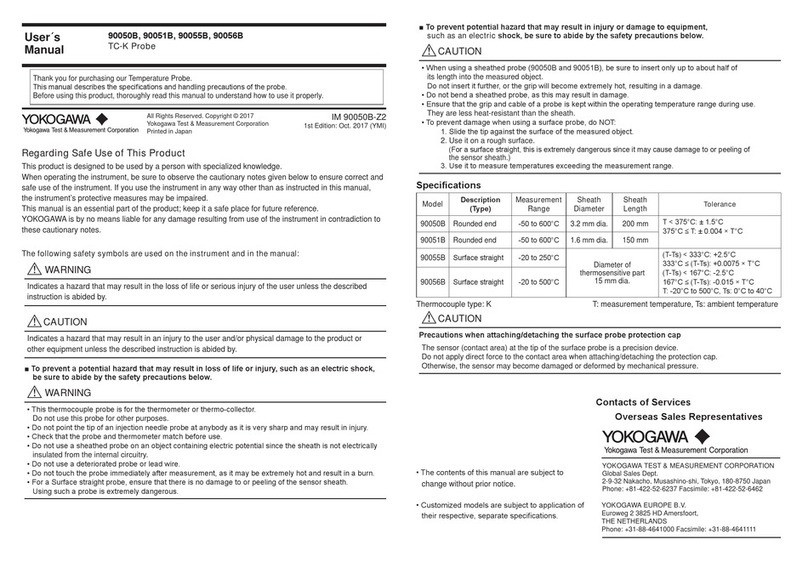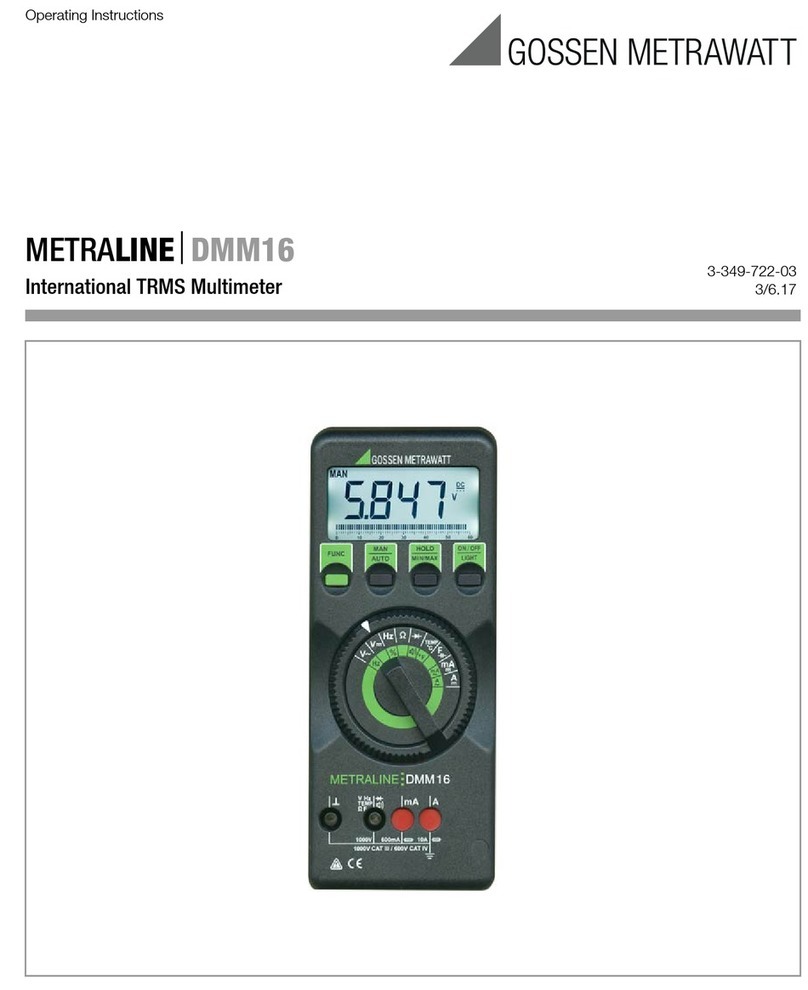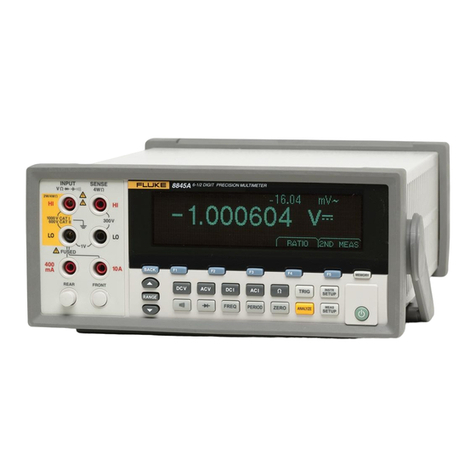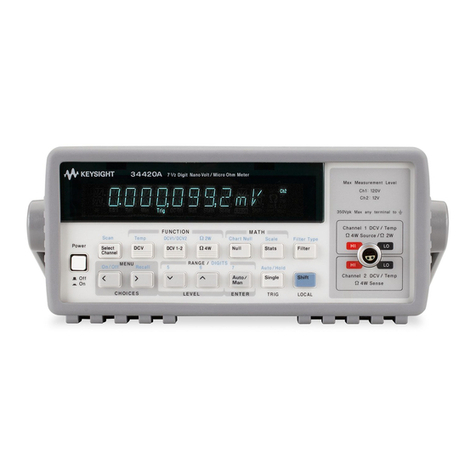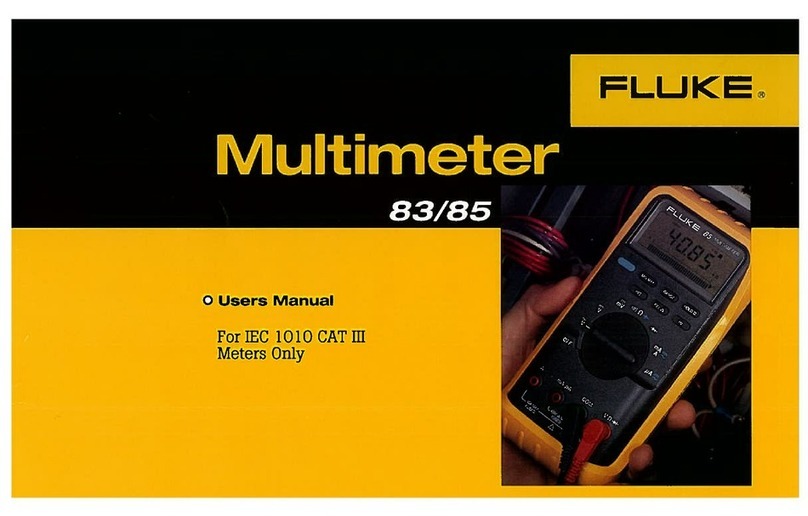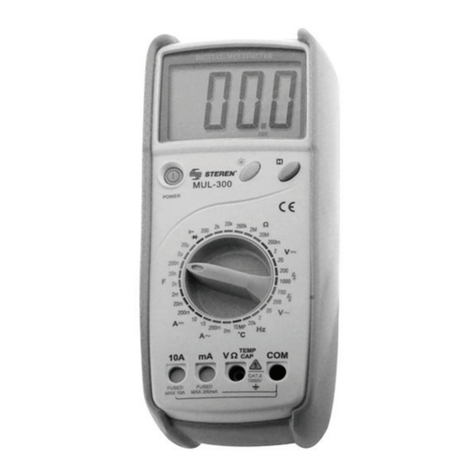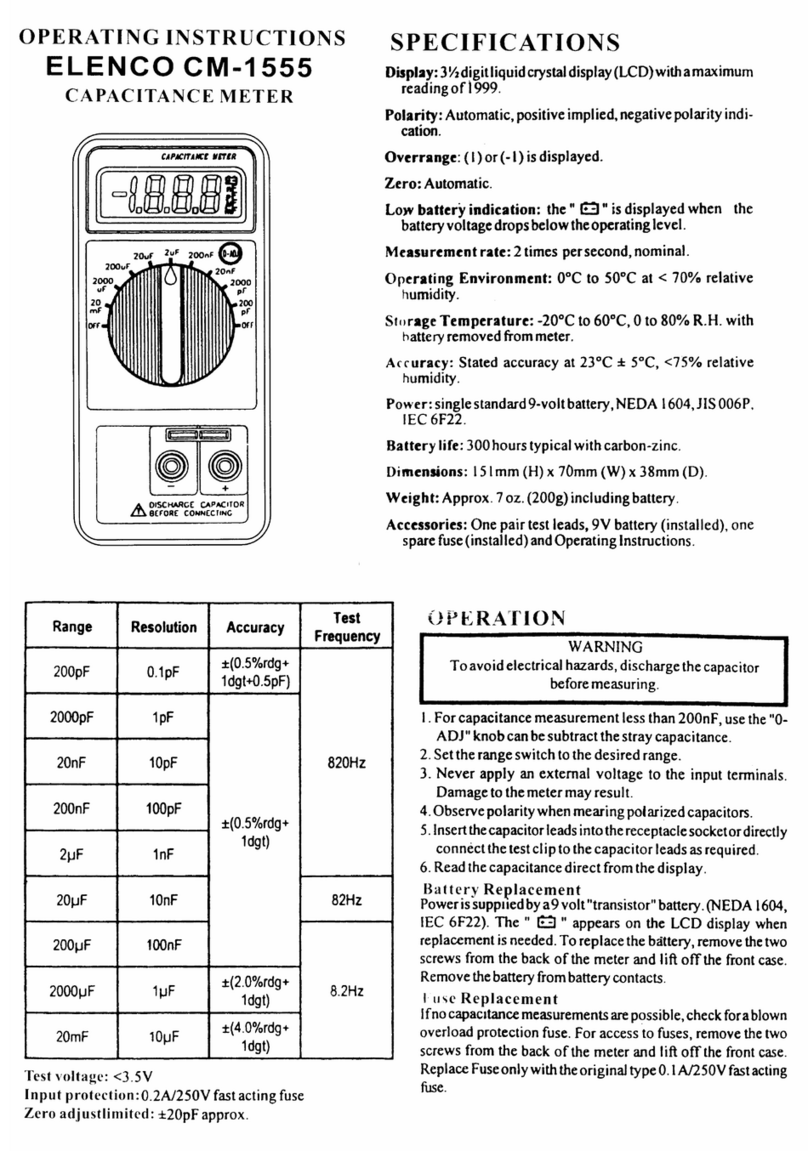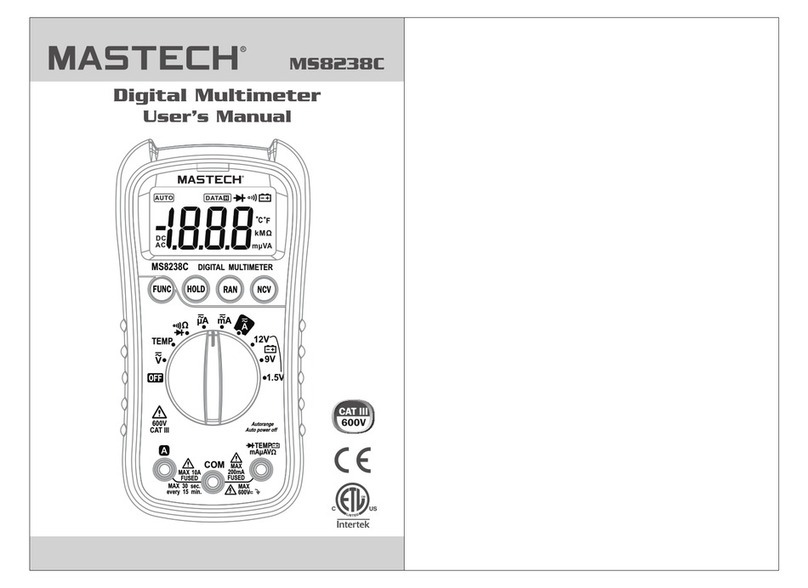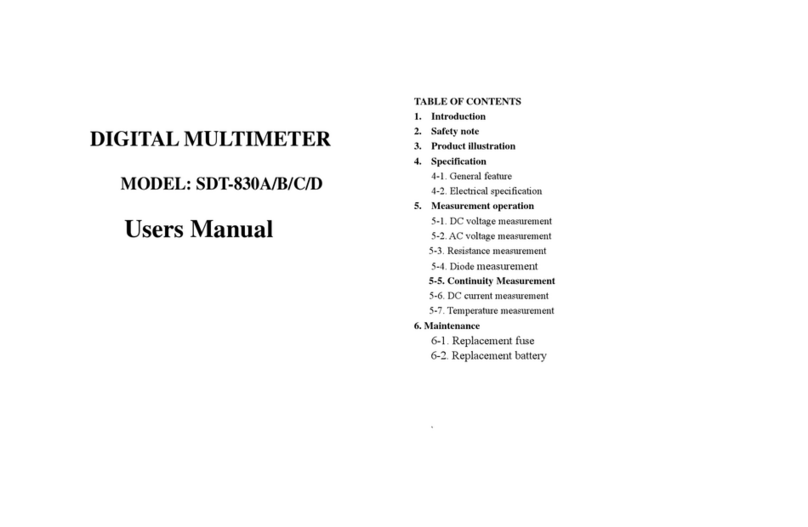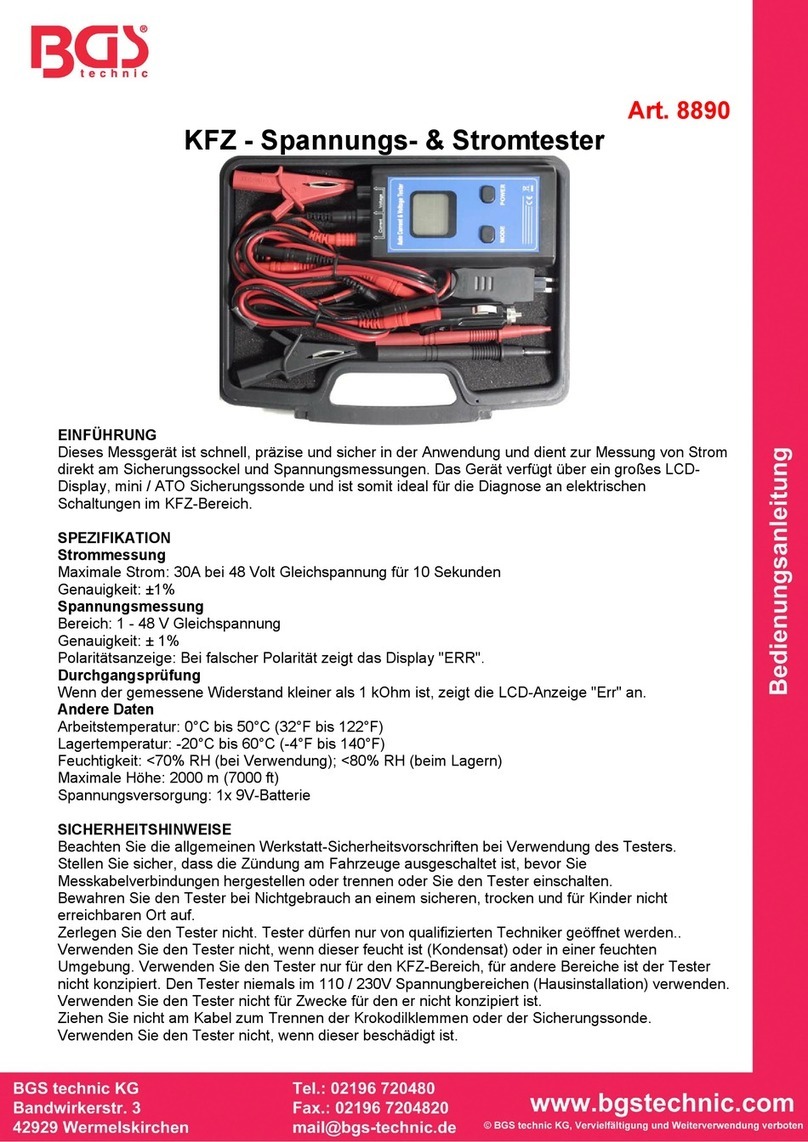
7
Adres producenta/ Adresse des Herstellers/ Manufacturer’s Address/ Адрес производителя
GTV Poland Sp. z o.o. Sp. k., ul. Przejazdowa 21, 05-800 Pruszków
Pomiar pojemności:
1. Obrócić pole przełącznika obrotowego „ ”. Naciśnij klawisz SEL, aby przejść do trybu pomiaru pojemności.
2. Podłącz czarną sondę odpowiednio do gniazda wejściowego „COM”, a czerwoną do gniazda wejściowego „V”.
3. Użyj końcówek sondy, aby zmierzyć pojemność testowanego kondensatora.
4. Odczytaj zmierzoną wartość pojemności na wyświetlaczu.
Uwaga: Podczas pomiaru niskiej rezystancji, w celu dokładnego pomiaru, należy zewrzeć obie sondy, aby uzyskać wartość re-
zystancji zwarcia, a następnie należy ją odjąć od zmierzonej wartości rezystancji. Podczas pomiaru rezystancji w polu 99,99 M,
w niektórych przypadkach ustabilizowanie odczytu zajmie kilka sekund. Jest to normalne w przypadku pomiarów o wysokiej
rezystancji. W trybie pomiaru pojemnościowego po przekroczeniu maksymalnego zakresu wyświetli się „OL”. Podczas po-
miaru kondensatora o dużej pojemności mierzenie go zwykle trwa kilka sekund. Przed pomiarem kondensatora konieczne
jest zwolnienie ładunku resztkowego, co jest szczególnie ważne w przypadku kondensatora o wysokim napięciu, aby uniknąć
uszkodzenia miernika i zagrożeń osobistych.
5-3. Pomiar natężenia prądu przemiennego i stałego
Nie próbuj mierzyć prądu w obwodzie, gdy napięcie między napięciem w obwodzie otwartym a ziemią przekracza 250 V.
Przepalenie bezpiecznika podczas pomiaru może spowodować uszkodzenie miernika lub obrażenia ciała.
Gdy bezpiecznik jest odłączony, aby uniknąć uszkodzenia miernika lub sprzętu, należy wymienić bezpiecznik na taki sam
przed pomiarem. Do pomiaru użyj właściwego gniazda wejściowego i pola funkcyjnego. Gdy sonda jest podłączona do
gniazda wejściowego prądu, nie podłączaj końcówki sondy do żadnego obwodu w trybie równoległym.
1. Odłącz zasilanie badanego obwodu. Rozładuj wszystkie kondensatory wysokiego napięcia w badanym obwodzie.
2. Obróć przełącznik obrotowy na odpowiednie pole prądu. Użyj przycisku „SEL”, aby wybrać tryb pomiaru prądu stałego lub
przemiennego.
3. Włóż czarną sondę do gniazda wejściowego „COM”, a czerwoną sondę do odpowiedniego gniazda wejściowego prądu.
4. Odłącz testowany obwód. Podłącz czarną sondę do końca o niskim potencjale obwodu, który został odłączony, i podłącz czer-
woną sondę do końca o wysokim potencjale obwodu, który został odłączony. (Odwrócenie sond da ujemną wartość odczytu, ale
nie uszkodzi miernika.)
5. Włącz zasilanie testowanego obwodu, a następnie wyświetl wyświetlany odczyt. Jeśli wyświetlacz pokazuje tylko „OL”, oznacza
to, że sygnał wejściowy przekracza zakres.
6. Odciąć zasilanie badanego obwodu. Rozładuj wszystkie kondensatory wysokiego napięcia. Wyjmij sondy miernika i przywróć
obwód do pierwotnego stanu.
Uwaga: Podczas pomiaru dużego prądu 5–10 A czas włączenia nie powinien przekraczać 10 sekund, aby uniknąć niestabilnych
danych testowych z powodu ciepła. W przypadku wielokrotnego pomiaru odstęp między dwoma pomiarami powinien wynosić
3-5 minut.
5-4. Test ciągłości i diod
Aby uniknąć uszkodzenia miernika lub testowanego urządzenia, konieczne jest odłączenie zasilania testowanego
obwodu i rozładowanie wszystkich kondensatorów wysokiego napięcia przed pomiarem diod.
1. Ustaw przełącznik obrotowy na i podłącz końcówki sondy do obu końców mierzonego obiektu.
2. Podłącz czarną sondę odpowiednio do gniazda wejściowego „COM”, a czerwoną do gniazda wejściowego „V”.
3. Jeśli rezystancja mierzonego obiektu jest mniejsza niż 30 omów, miernik automatycznie przełączy się na pole Ciągłość. Zielony
wskaźnik wskaźnika wł. / Wył. Zaświeci się i rozlegnie się dźwięk brzęczyka, wskazując, że oba punkty są połączone, a wyświe-
tlacz LCD pokazuje wartość rezystancji.
4. Jeśli mierzonym obiektem jest dioda, miernik automatycznie przełączy się na pole diody, gdy jest w ciągłej przewodzie, a ekran
LCD wyświetla przybliżone napięcie przewodzące diody. Gdy dioda jest w obwodzie otwartym lub w odwrotnej polaryzacji, na
ekranie pojawi się „OL”. Normalna dioda w obwodzie powinna nadal wytwarzać spadek napięcia od 0,5 V do 0,8 V. jednak odczyt
odchylenia zwrotnego różni się od rezystancji innych kanałów między dwiema sondami.
5-5. Test przewodu pod napięciem
1. Ustaw przełącznik obrotowy w polu Live. Na ekranie wyświetla się „----”.
2. Podłącz czerwoną sondę tylko do gniazda wejściowego V.
3. Podłącz czerwoną końcówkę sondy do gniazda zasilania L lub w pobliżu przewodu pod napięciem, jeśli miernik wykryje napię-
cie prądu przemiennego, na ekranie pojawi się komunikat LIVE ; dwie czerwone diody po prawej górnej stronie panelu zaświecą
się, i włączy się brzęczyk, co oznacza że przewód jest pod napięciem.
5-6. Test NCV
Na działanie detekcji mogą mieć wpływ takie czynniki, jak konstrukcja gniazda, grubość i rodzaj izolacji. Nawet jeśli nie
jest wskazane jako LIVE, napięcie może nadal tam istnieć. Nie należy polegać wyłącznie na bezdotykowym detektorze
napięcia w celu ustalenia, czy na przewodzie występuje napięcie.
Kiedy napięcie wejściowe jest doprowadzane do zacisku wejściowego miernika, wskaźnik wykrywający napięcie może zapalić się
z powodu obecności napięcia indukowanego.
Ale źródła zakłóceń w otoczeniu zewnętrznym (takie jak latarki, silniki itp.) Mogą przypadkowo uruchomić bezdotykowe wykrywanie
napięcia.
1. Ustaw przełącznik zakresu funkcji w polu NCV. Aby określić obecność napięcia zmiennego lub pola elektromagnetycznego na
obiekcie, umieść sondę ze znakiem „NCV” na przedniej części miernika w pobliżu mierzonego obiektu.
